Here are some photos from my kayaking trips to Mamit (Mammette) Lake just 14 km from my home in Logan Lake. The lake supports a big population of breeding and migrating waterfowl and is an important migration stopover in late summer and fall for a wide variety of shorebirds. Approaching birds slowly and carefully in a small kayak is a good way to get good views and photos of birds on the water and on shore.
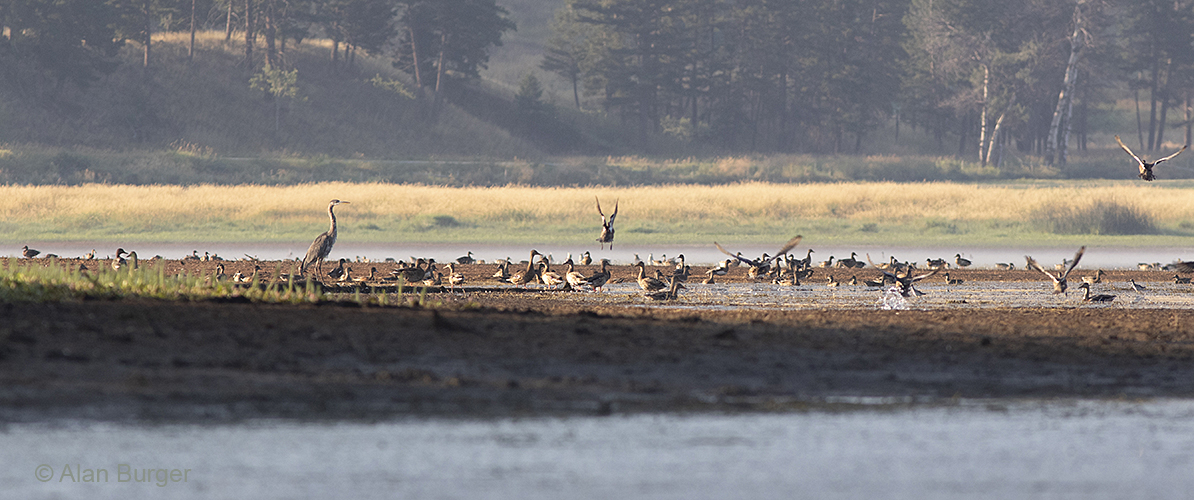
A typical scene in the early morning at Mamit Lake – a few herons & shorebirds and hundreds of ducks.
Local breeders
Here are a few species that breed in or around the lake.
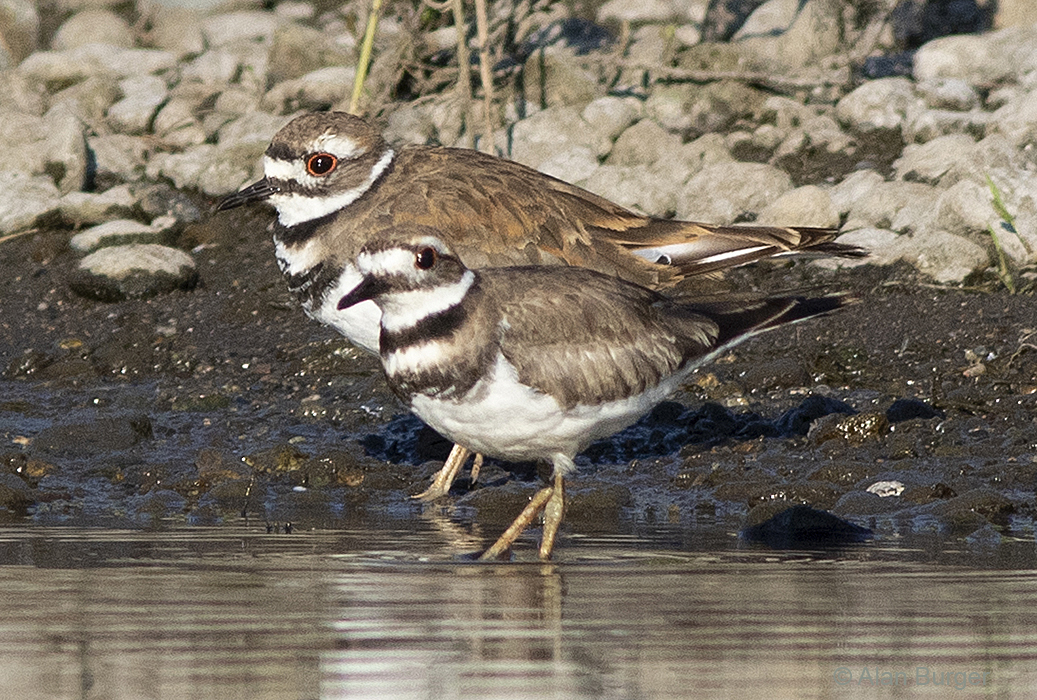
There are about 6 pairs of Killdeer that breed around the lake – mainly foraging on the open mudflats. The photo shows an adult (behind) and a fledged juvenile (in front). Compare the fresh but dull feathers on the juvenile with the brighter worn feathers of the adult.
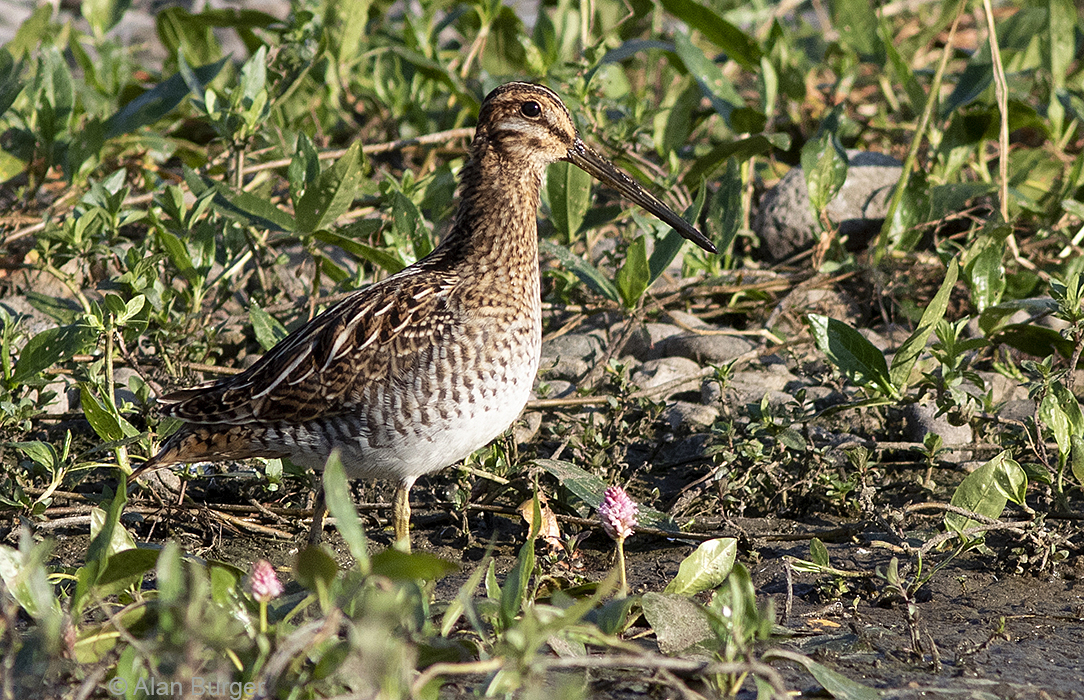
Wilson’s Snipe breed in the marshes bordering the lake. They are quite secretive birds but one occasionally sees them along the lake edge – usually in places where there is some emergent vegetation as in this photo.
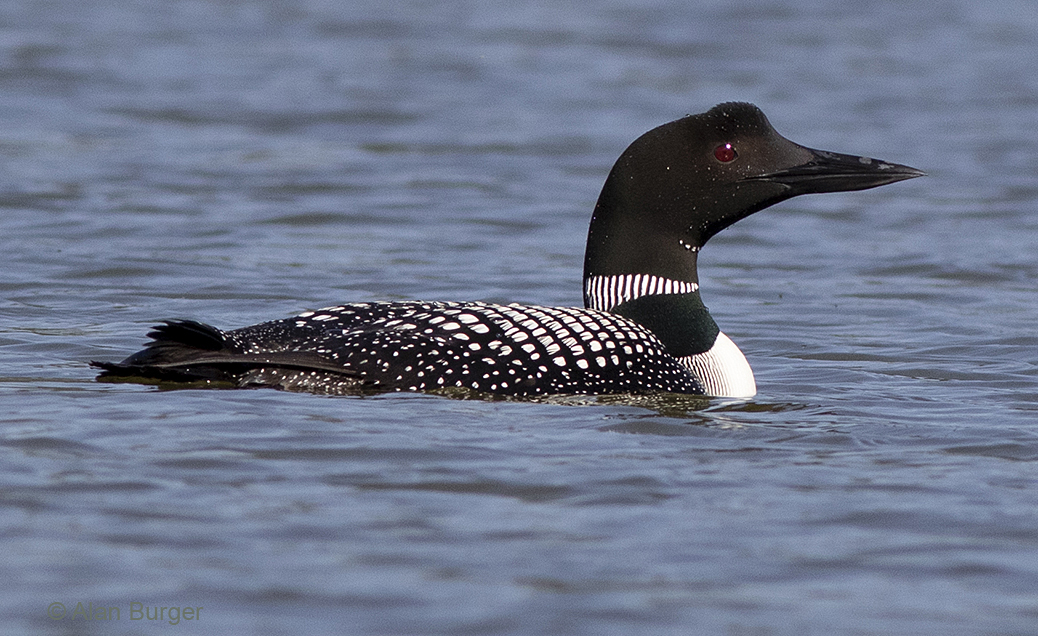
There are usually one or two pairs of Common Loons on the lake in summer. In 2022 they didn’t seem to raise any chicks.
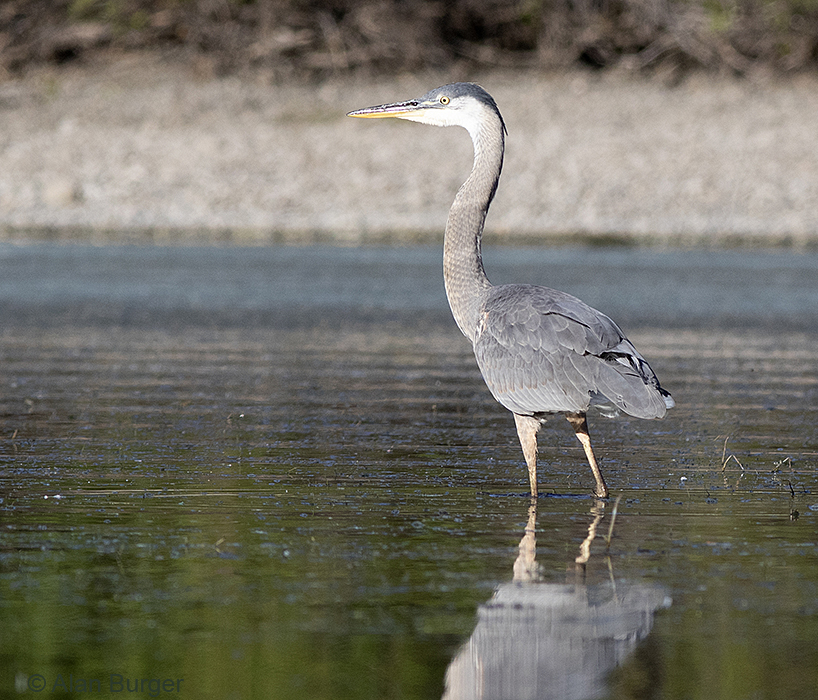
Great Blue Herons nest somewhere near the lake. In late summer there are often 2-3 newly-fledged juveniles around the lake. This bird with a dark crown is a juvenile.
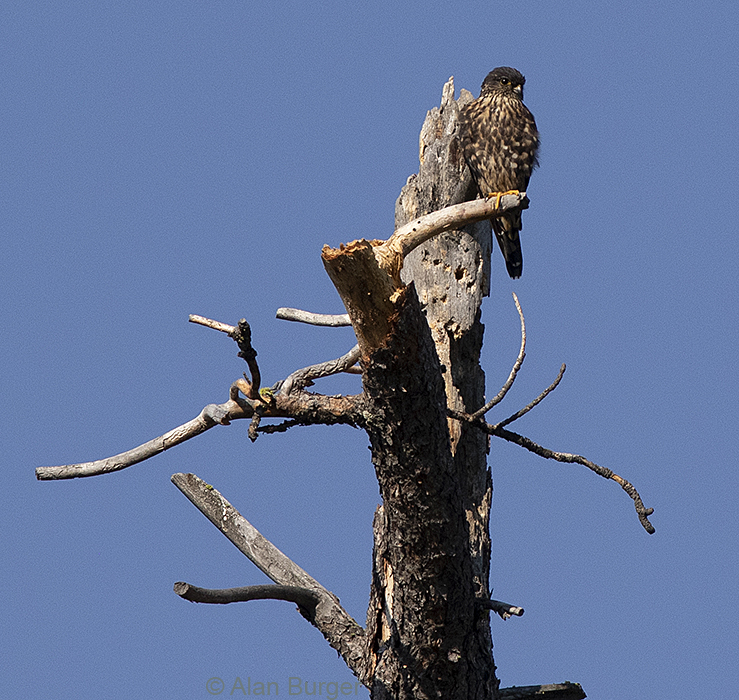
This Merlin was around the lake on a couple of my visits. The bushes around the lake usually had numerous sparrows and warblers, which would be potential prey for this little falcon.
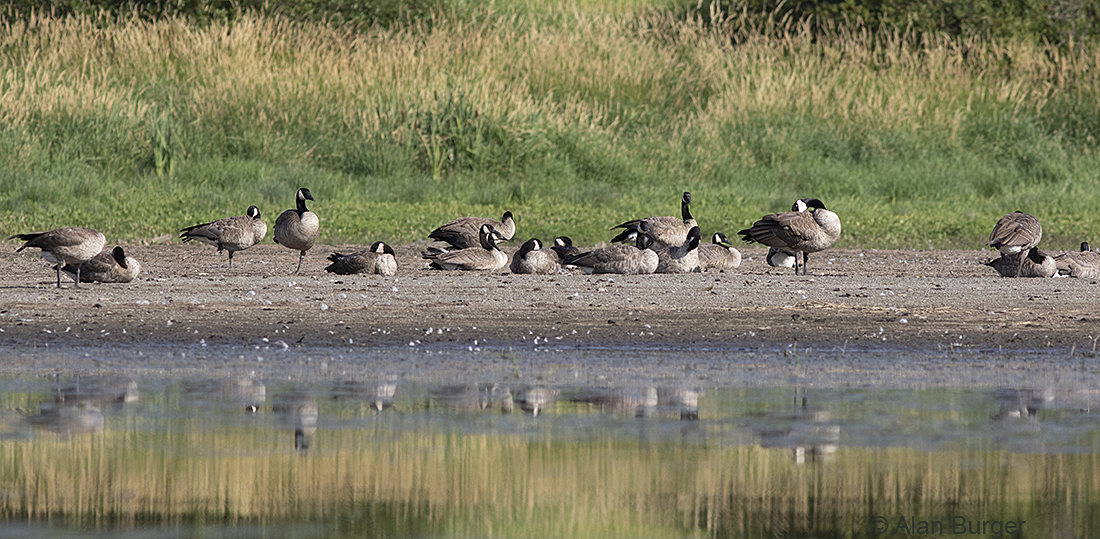
More than 50 Canada Geese hang around the lake, often with a gaggle of goslings in tow. These ones are fully grown in mid-August.
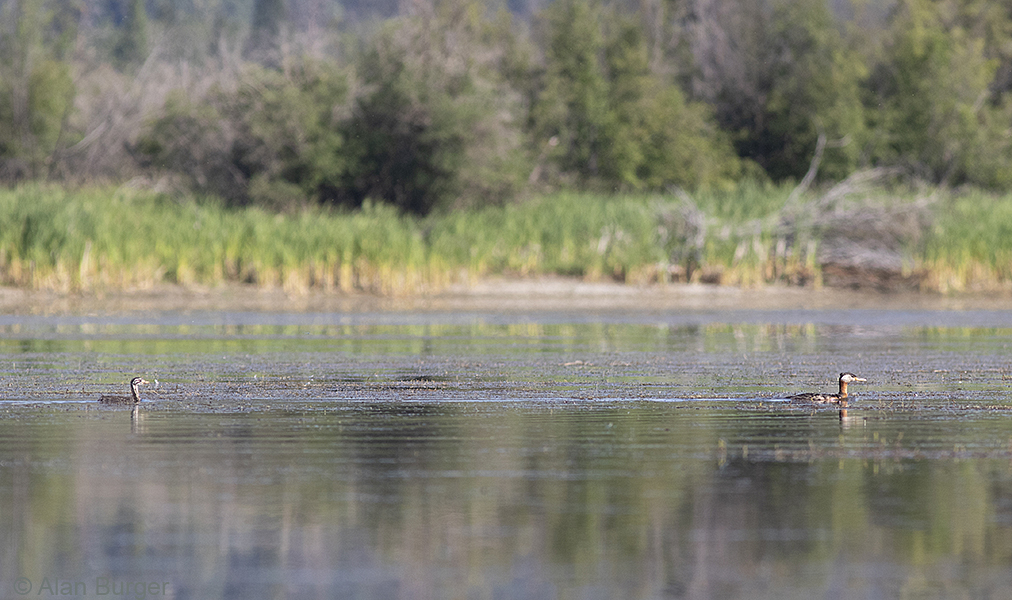
A pair of Red-necked Grebes successfully raised a chick on Mamit Lake in 2022. Here the young chick is following one of its parents – 31 July 2022.
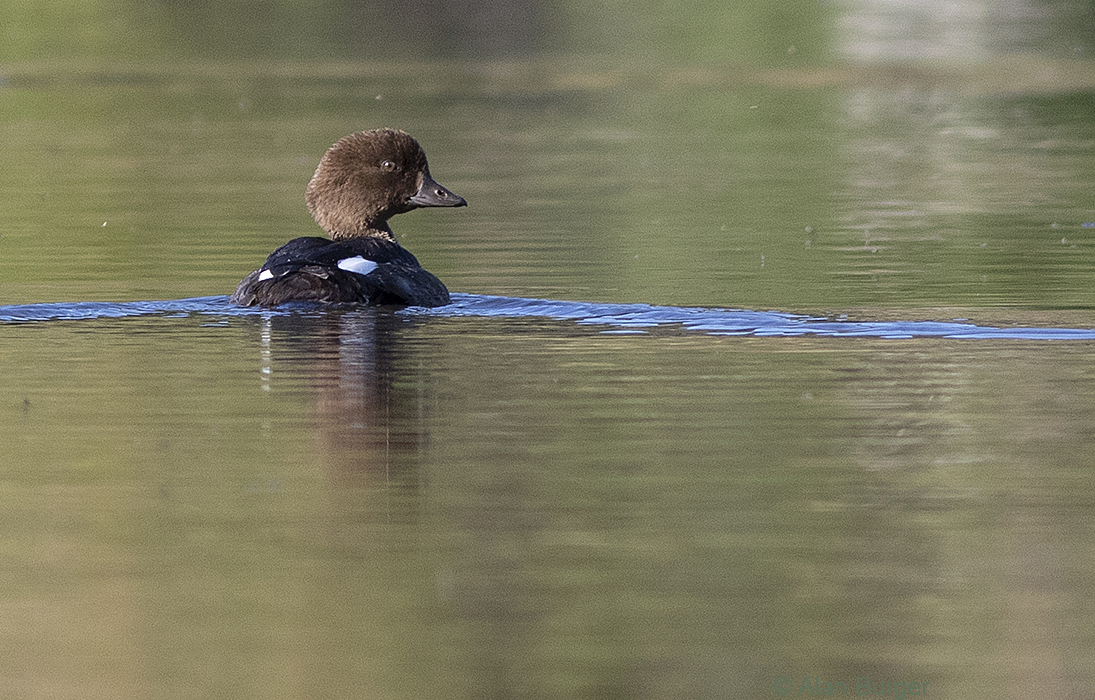
Several pairs of Barrow’s Goldeneyes breed on the lake. By late summer one sees only females and ducklings or newly-fledged juveniles
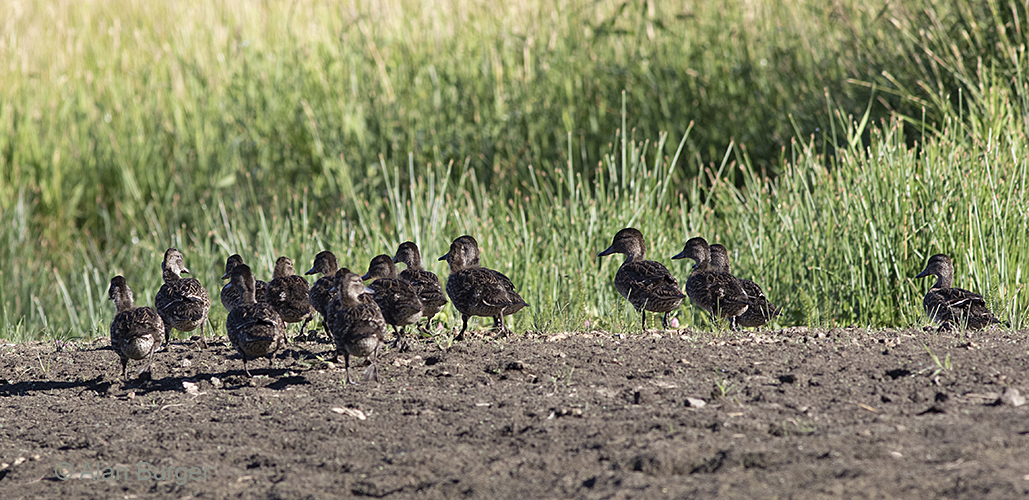
This group of Green-winged Teals is mostly almost-full-grown ducklings – perhaps from two broods that have joined up.
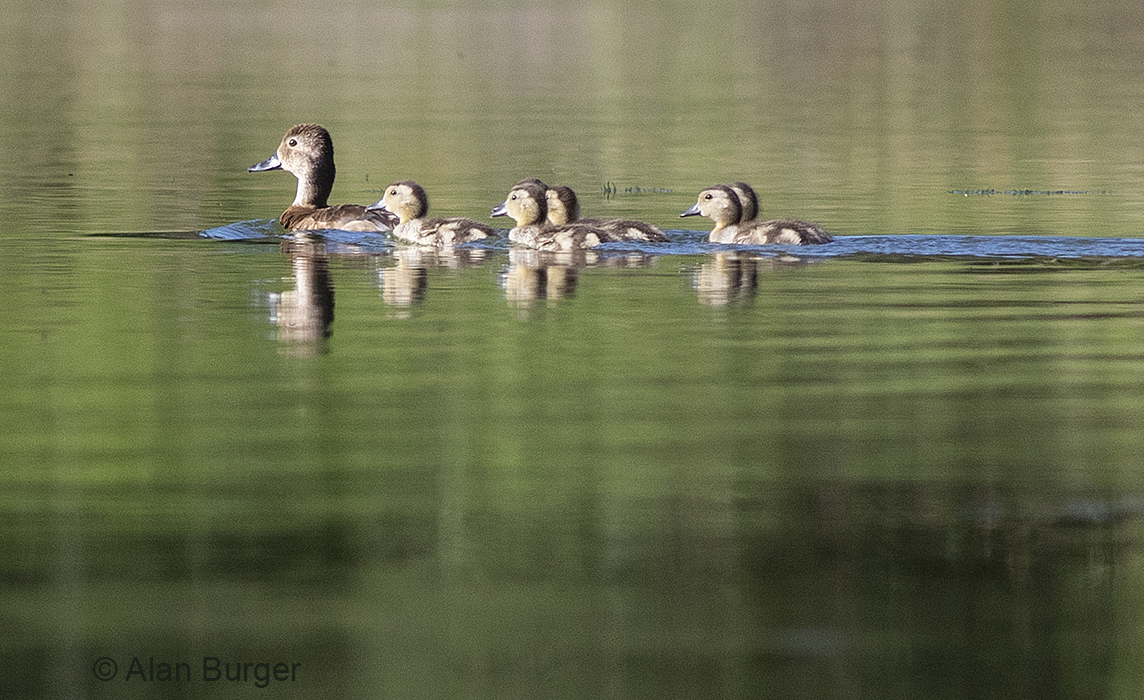
A female Ring-necked Duck leads her brood of ducklings – 7 August 2022
And of course the local mammals …..
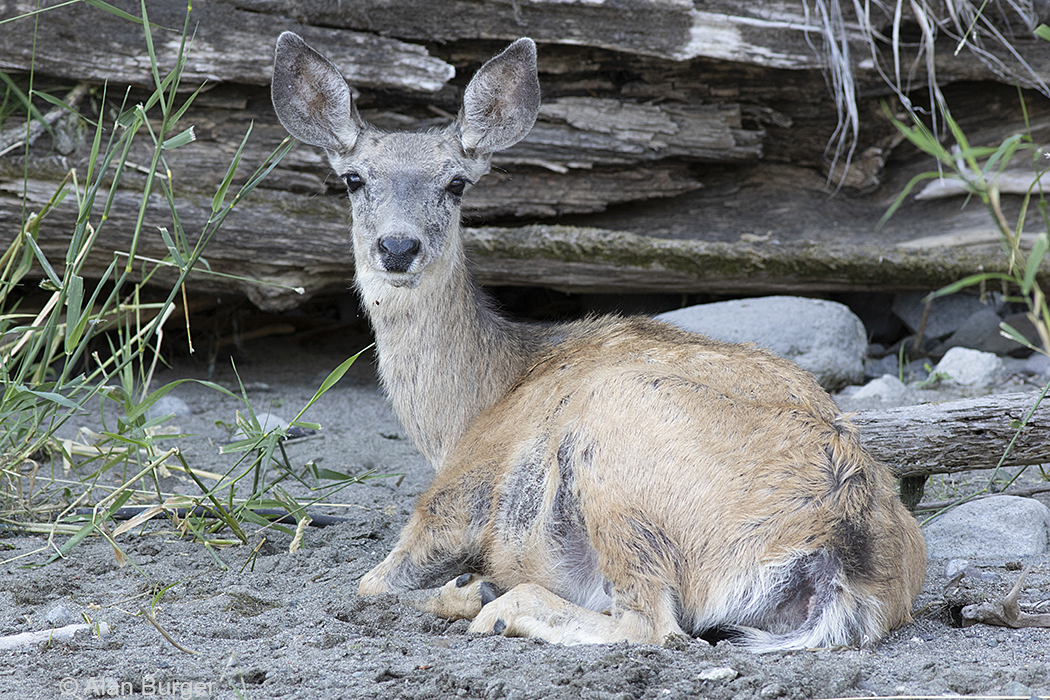
I regularly see Mule Deer when paddling around the lake. They are often quite curious to see the unusual sight of a kayak – like this doe.
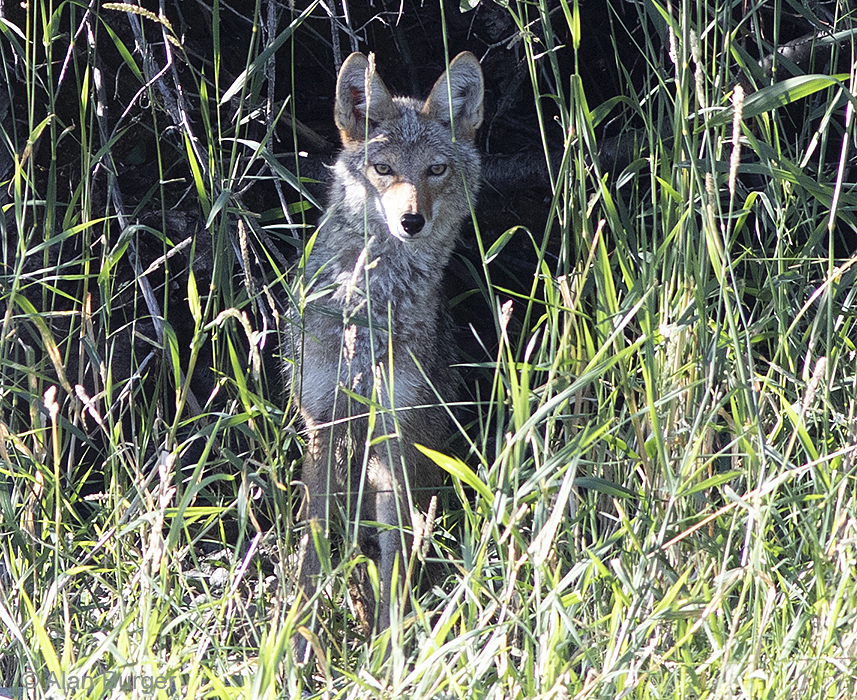
The large numbers of ducks breeding in the shoreline vegetation and waterfowl loitering on the mudflats attract Coyotes. Like the deer, this Coyote was very curious at the unusual sight of a kayak and emerged from the thicket to get a better view.
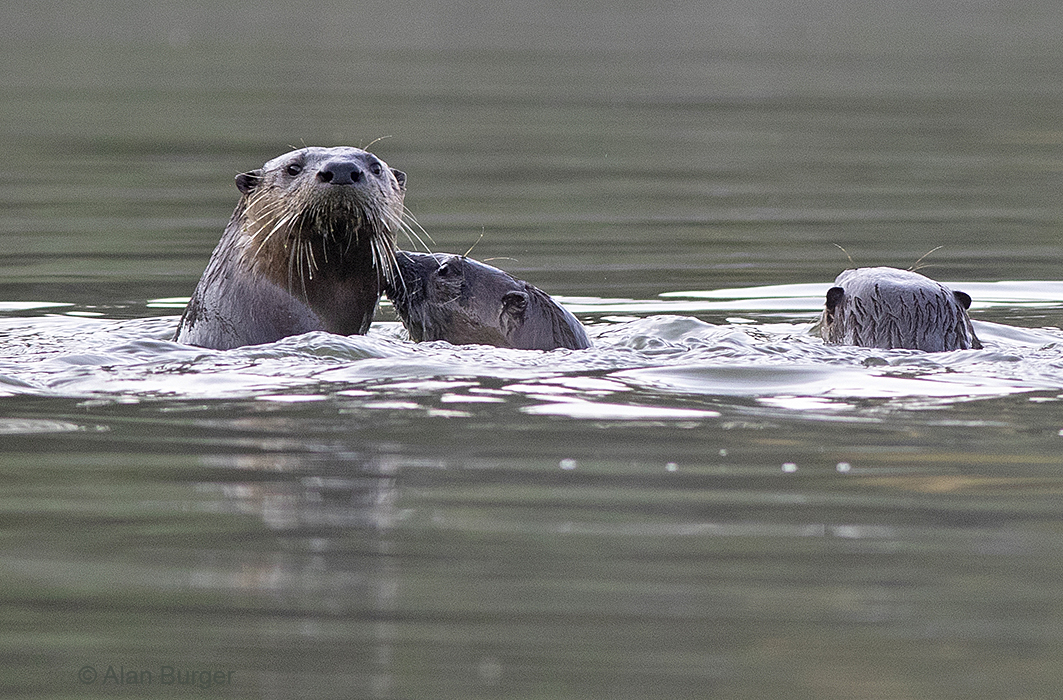
I encountered this family of River Otters on several visits in 2022 – a female on the left with two full-grown pups. They were always fun to watch – a mix of apprehension and fascination with my kayak.
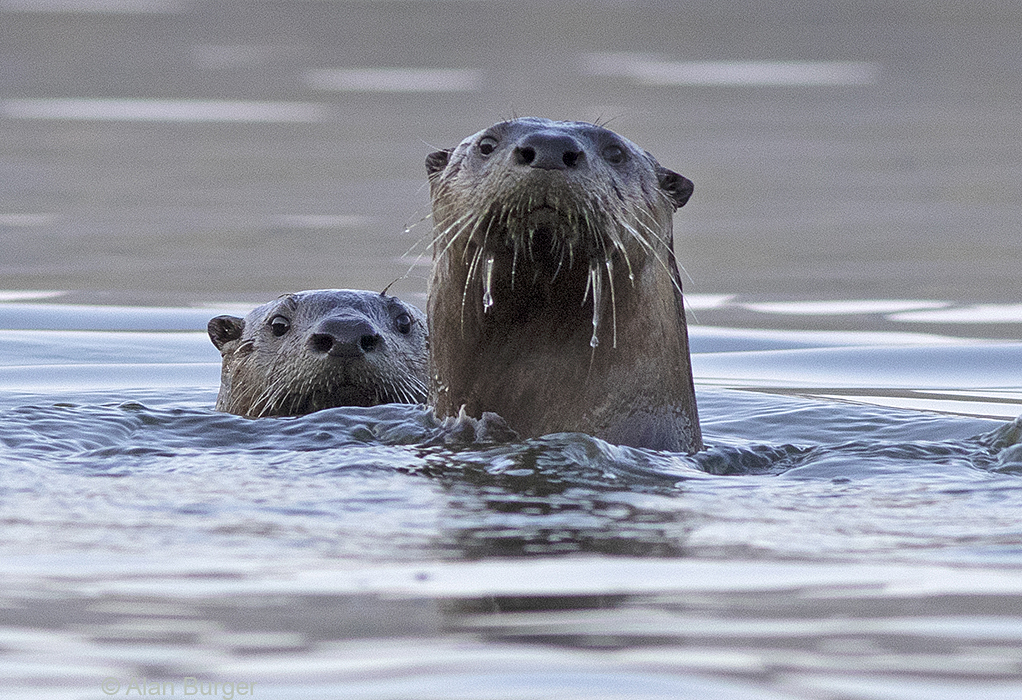
“I’m going to hide behind my Mom while I watch this scary thing!”
Non-breeding visitors and migrants
From the late-July through mid-October there is a constant turnover of birds visiting Mamit Lake. Each visit produces something new. Some are species that breed nearby and others are long-distant migrants heading south from breeding sites as far away as the high Arctic.
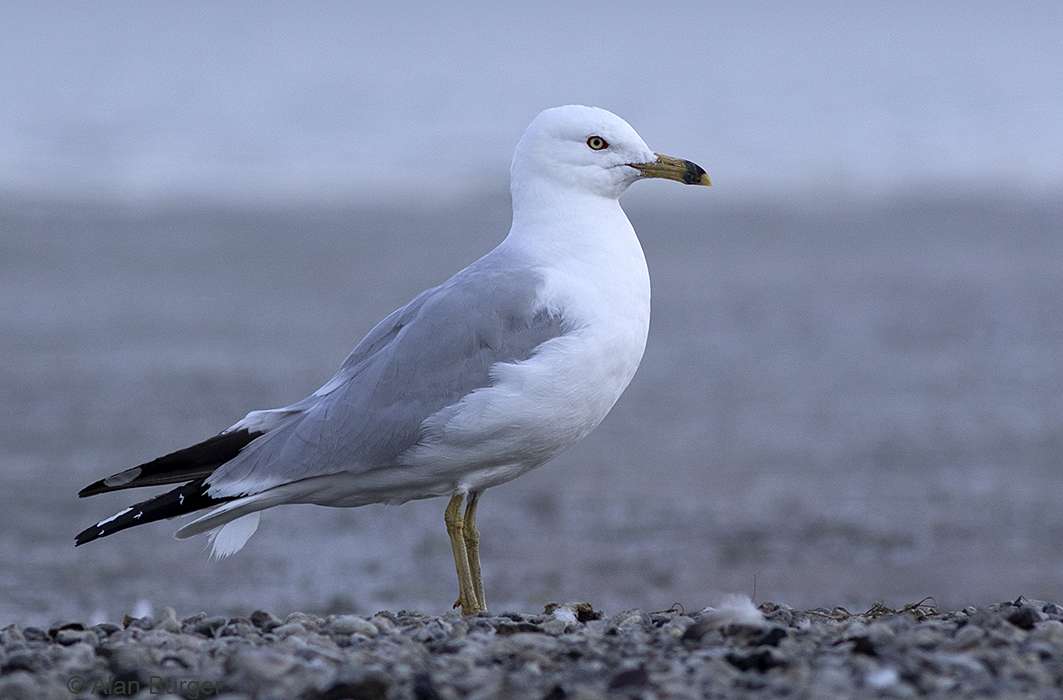
An adult Ring-billed Gull – one of the visiting species that breed relatively close to Mamit Lake. There is a breeding colony of this gull on Shuswap Lake at Salmon Arm.
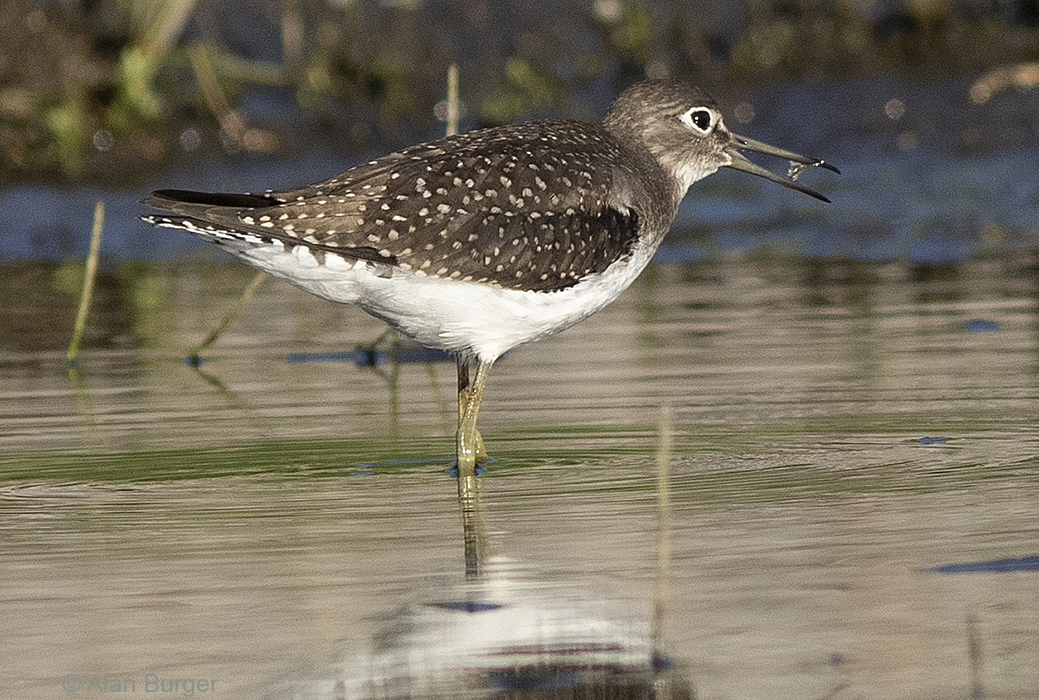
Solitary Sandpipers also breed in small numbers in southern British Columbia. This is a relatively rare bird to see anywhere in B.C. so I was delighted to have three on 31 July 2022 and two a week later.
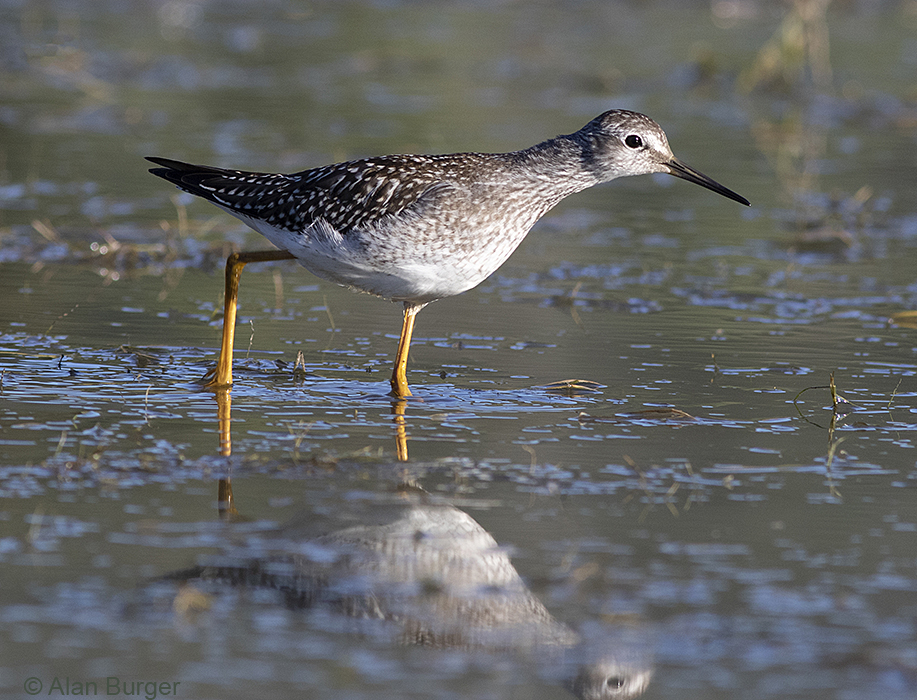
The elegant Lesser Yellowlegs – a fairly common visitor to the lake and one of my favourite birds to see and photograph.
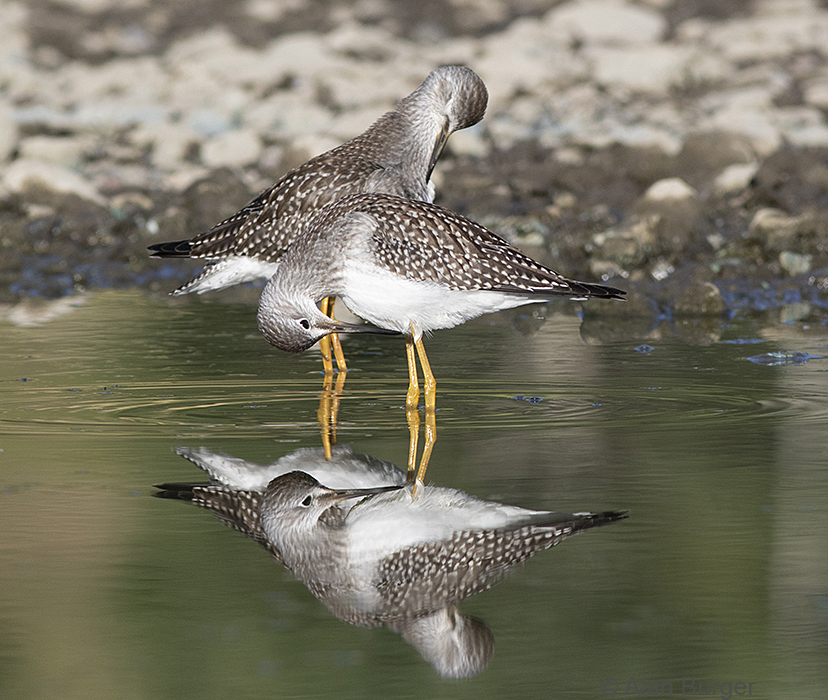
A couple of Lesser Yellowlegs reflected in the water as they preen.
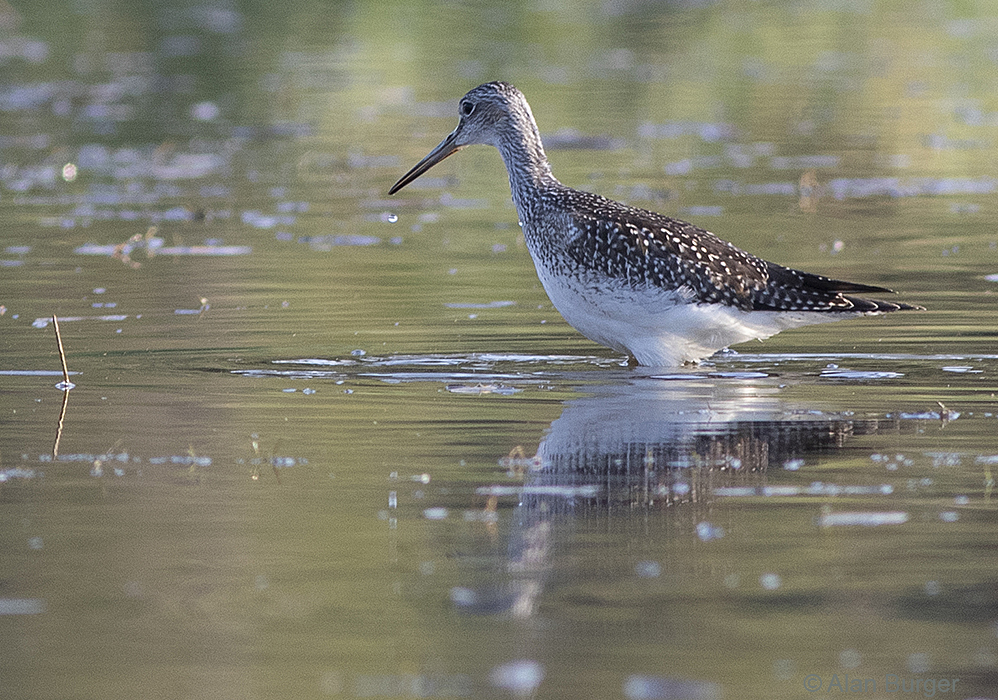
Greater Yellowlegs are also regular visitors to Mamit Lake from late summer through fall.
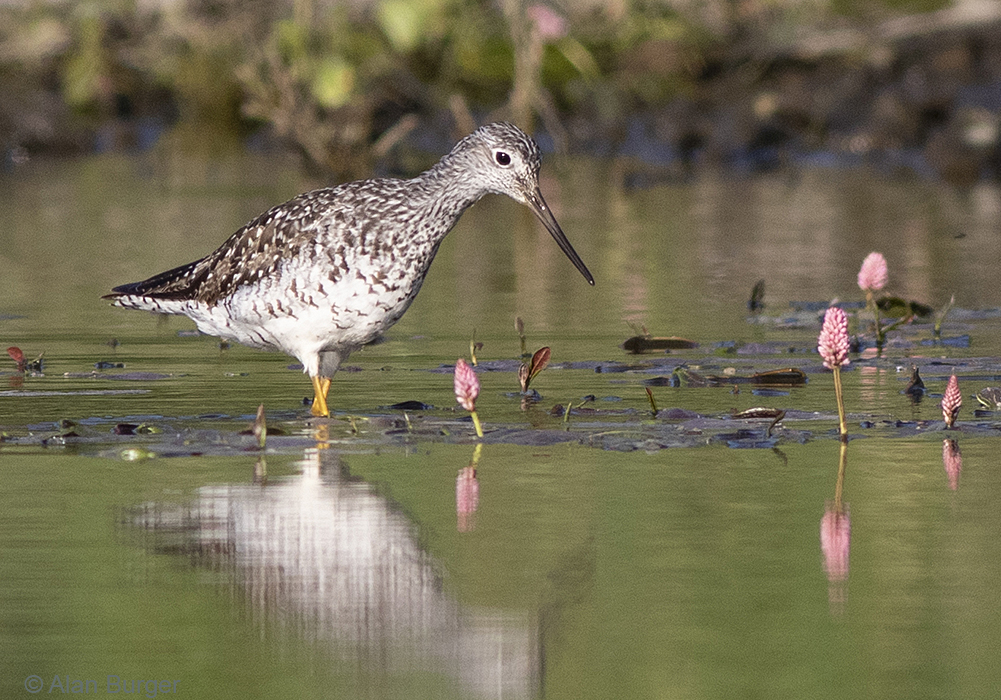
Another Greater Yellowlegs. These long-legged birds often forage by wading.
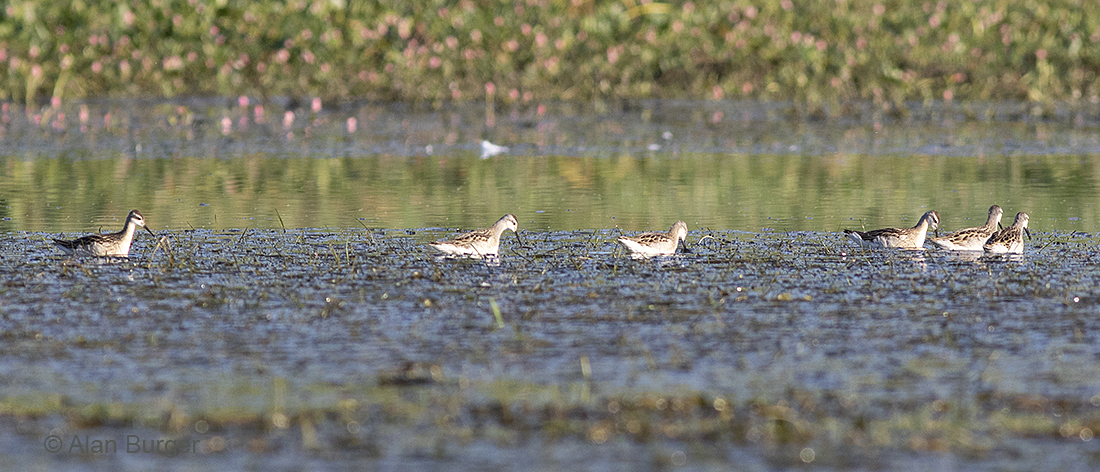
Wilson’s Phalaropes also breed in southern B.C., but not at Mamit Lake. This group of six newly-fledged juveniles was on the lake on 31 July 2022. Unlike most other shorebirds, phalaropes often forage by swimming.
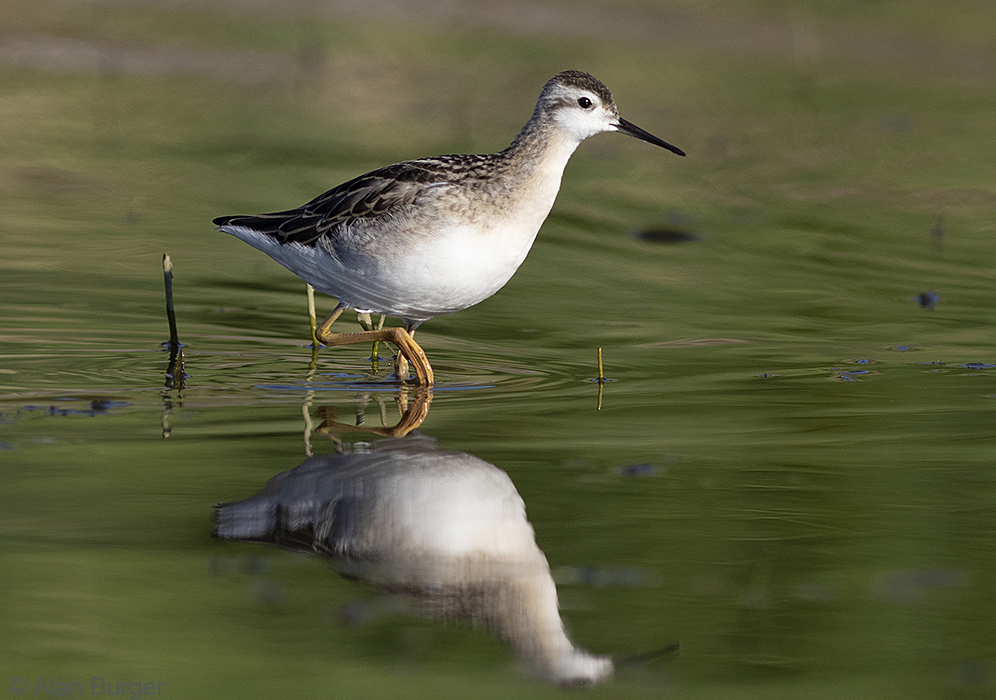
A closer look at one of the juvenile Wilson’s Phalaropes. Phalaropes have lobed toes which allow them to swim more efficiently.
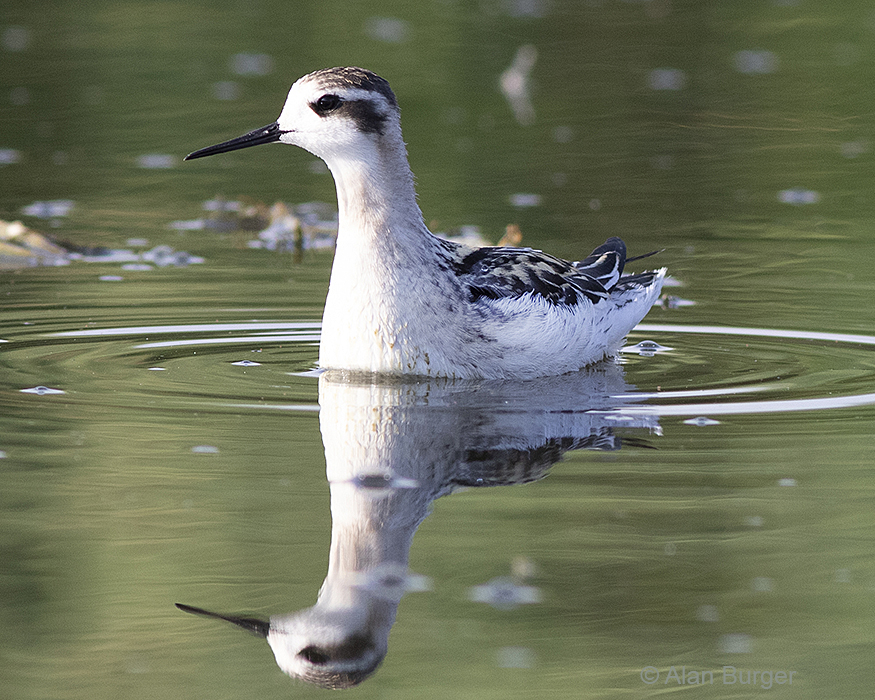
This juvenile Red-necked Phalarope remained on Mamit Lake for a week in late August 2022. This species breeds on the Arctic tundra and overwinters out at sea off South America, so it was a treat to have it on Mamit Lake on its southward migration – 21 August 2022.
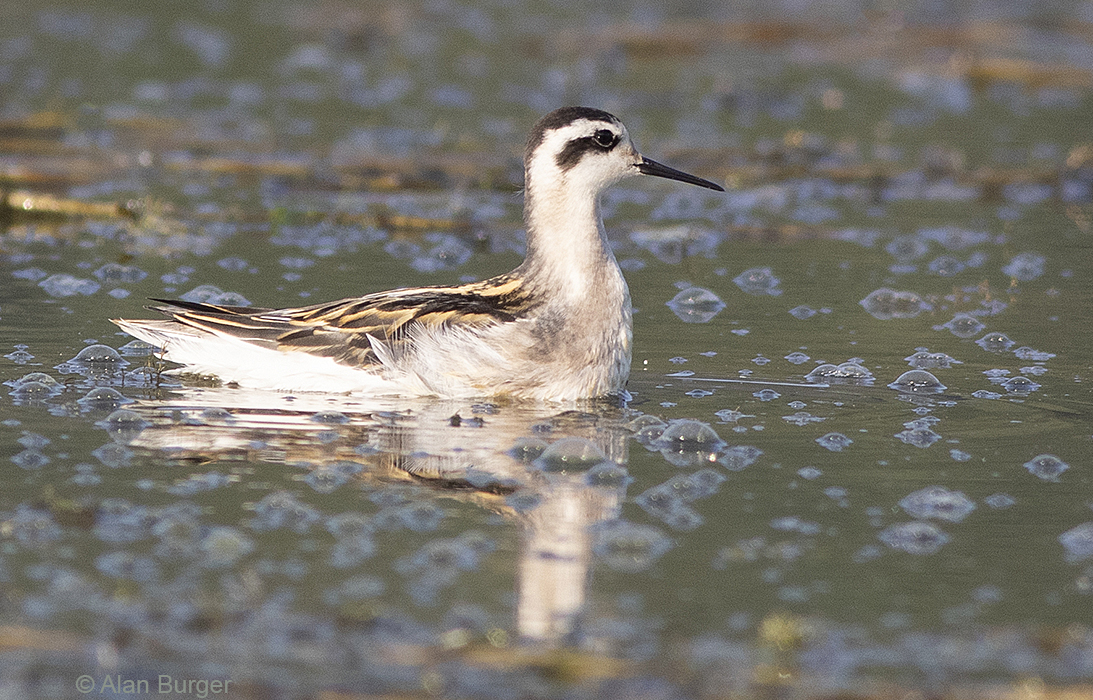
Here is the same Red-necked Phalarope at the same location on the lake five days later – 26 August 2022.
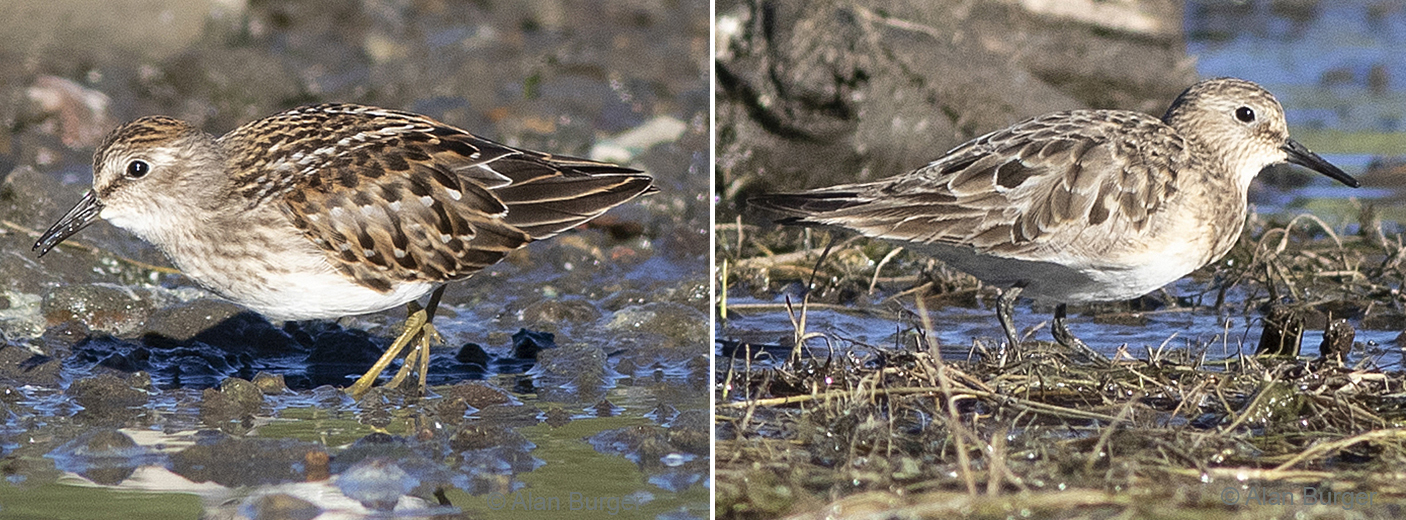
Two peep sandpipers that look very similar at a distance but are identifiable at close range. The Least Sandpiper (left) has diagnostic yellowy-green legs and fairly bright plumage. The Semi-palmated Sandpiper (right) has black legs and dull plumage. Both were at the lake on 7 August 2022.
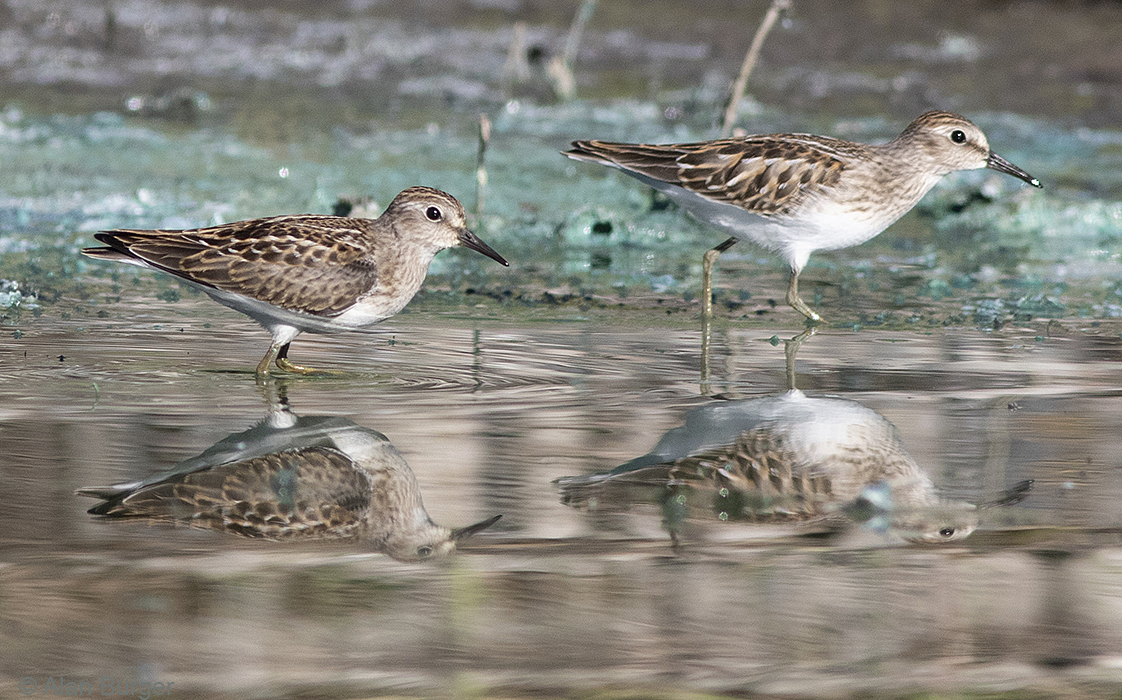
A couple of Least Sandpipers – these are the most common migrant shorebird at Mamit Lake and occur from late August through mid-October. The bright green deposits behind these birds are accumulations of cyanobacteria (blue-green algae) which can produce toxins and led to the closure of Mamit lake for human swimming and fishing in summer 2022. These blooms are indicators of excessive fertilizers and cow manure running into the lake.
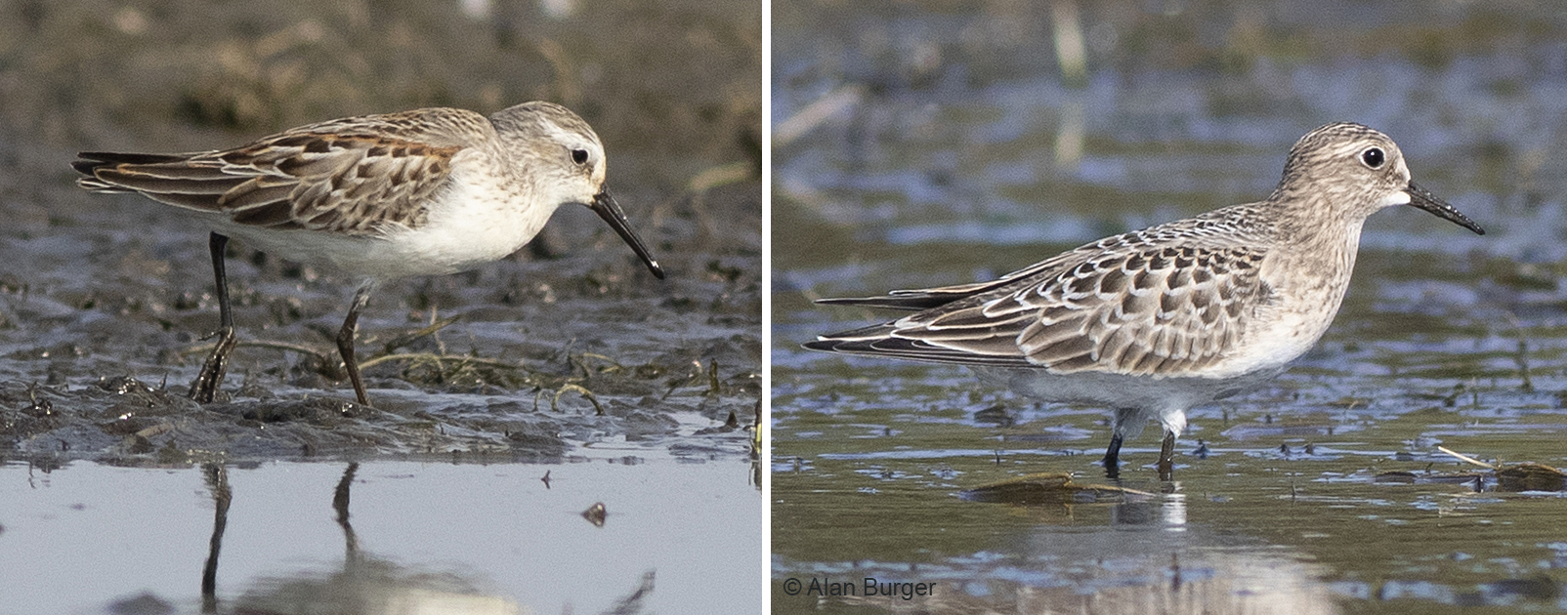
A couple of sandpipers that are regular visitors but never common on Mamit Lake: the Western Sandpiper (left) is extremely common on the B.C. coast but less so in the interior; Baird’s Sandpiper (right) is uncommon across B.C. but more common migrating across the Prairies. Notice how long the wings are in the Baird’s Sandpiper – this is a super long-distant migrant – they go all the way to Tierra del Fuego, the last bit of continent before the Antarctic.
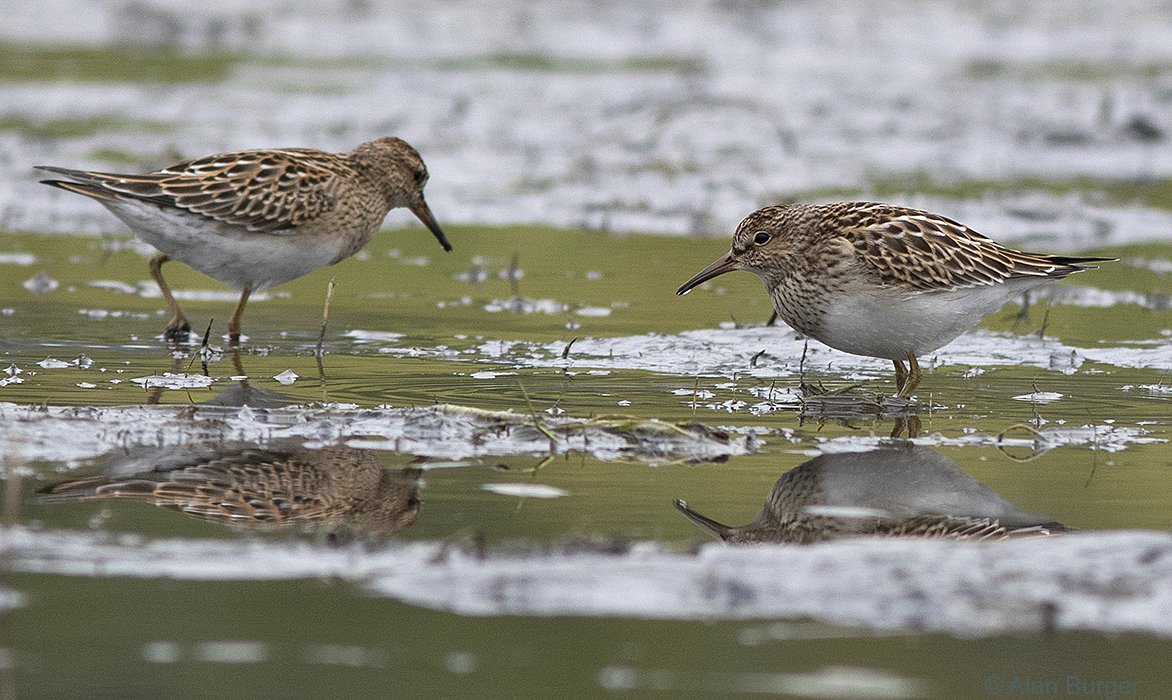
Somewhat larger than the peep sandpipers (Least, Western, Semi-palmated etc.), Pectoral Sandpipers are another species that regularly stops over at Mamit Lake on its long migration from Arctic tundra breeding grounds to South American wintering areas.
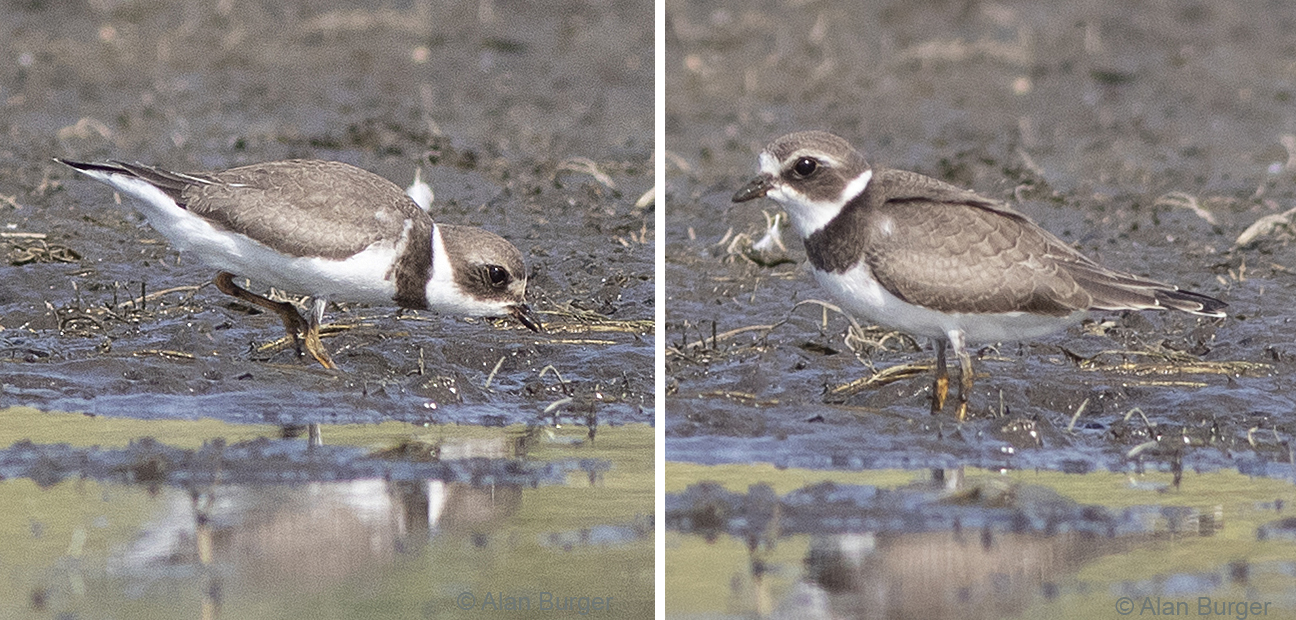
Several juvenile Semi-palmated Plovers were at the lake in early September 2022.
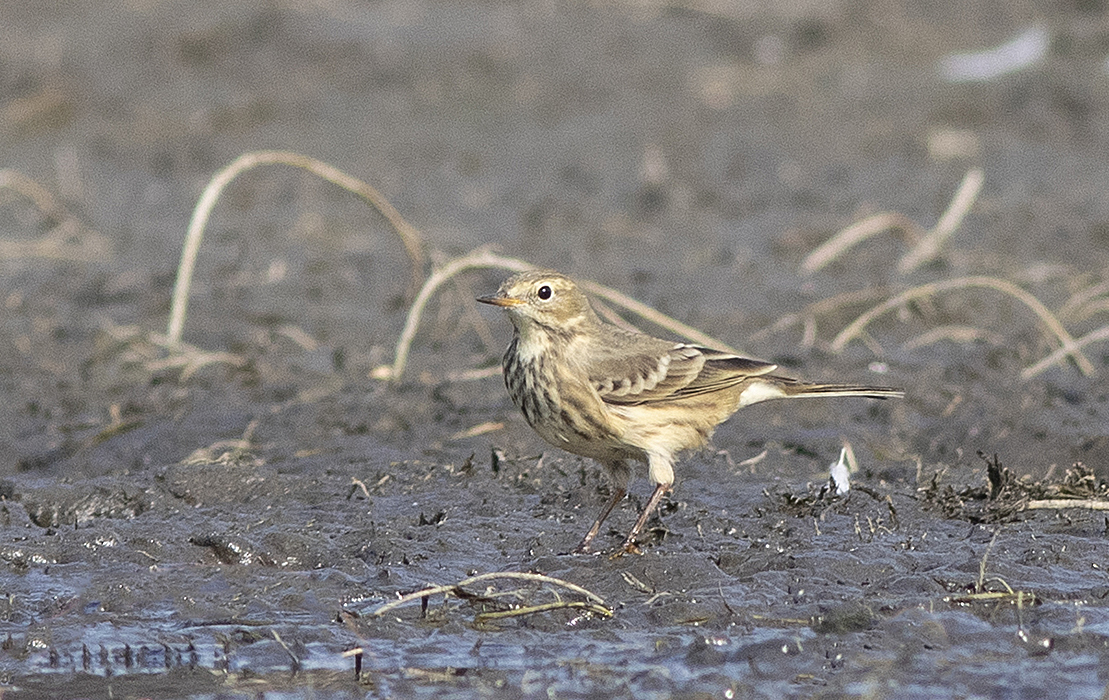
In early fall small flocks of 10-20 American Pipits arrive at the lake to forage on the mudflats, often in among the shorebirds.
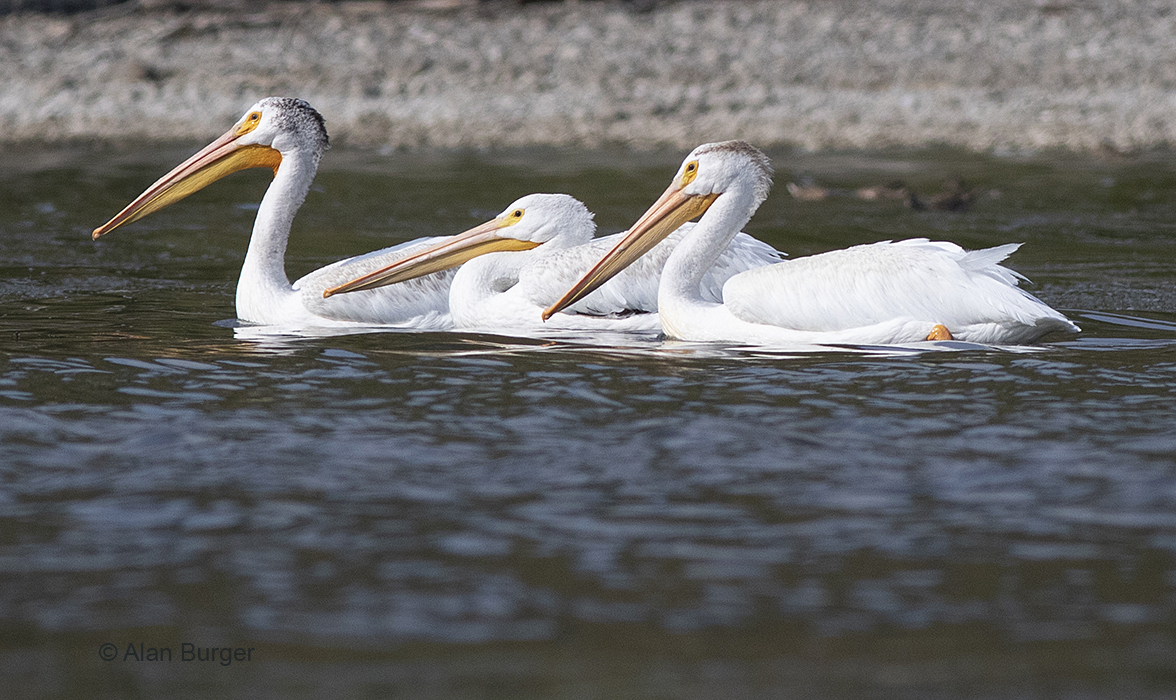
Four White Pelicans spent the late summer and fall at Mamit Lake. The traces of brown on their backs and heads indicate that they are immature birds. White Pelicans breed on only one location in British Columbia – at Stum Lake west of Williams Lake, over 200 km direct flight from Mamit Lake. Non-breeding immatures, like these, are free to wander far afield.
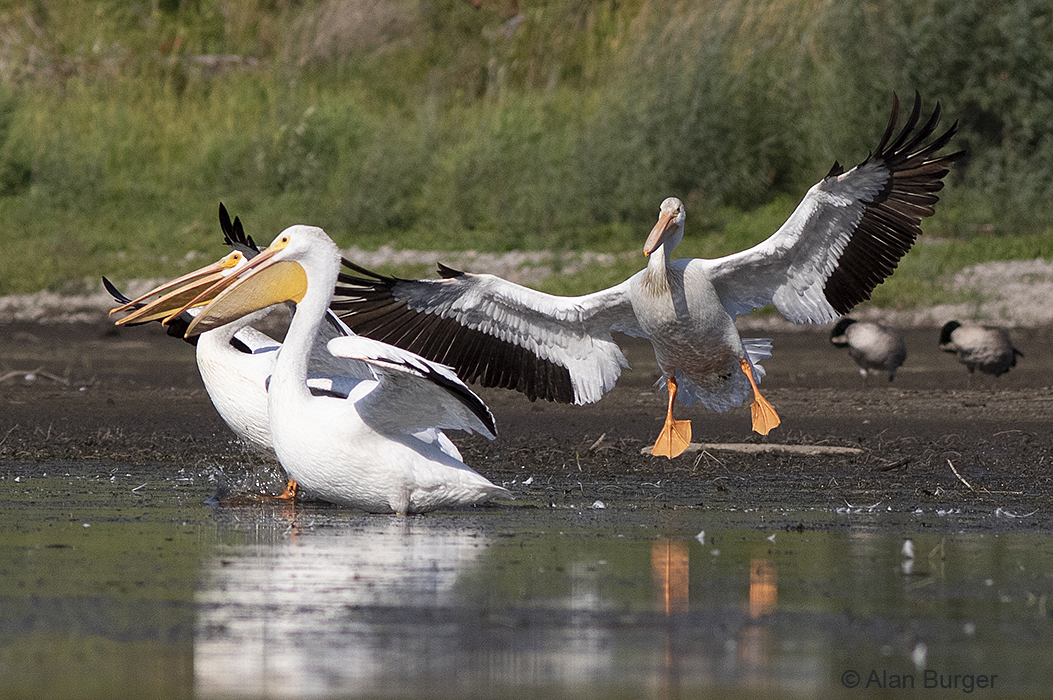
This incoming White Pelican is disturbing the peace at the pelican roost site.
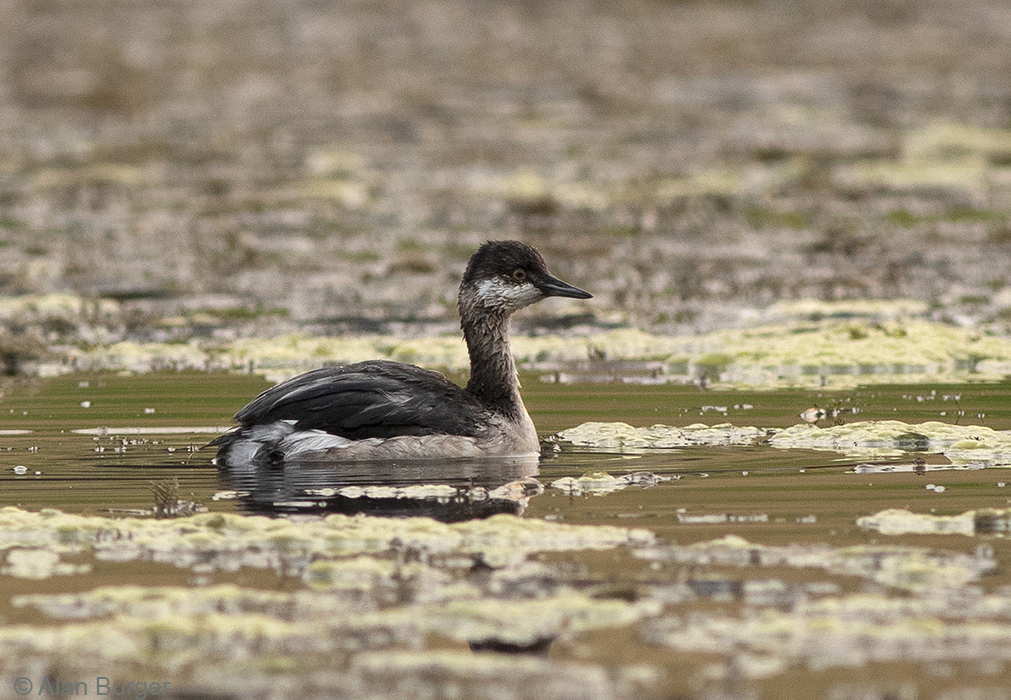
Horned Grebes don’t breed on Mamit Lake but they are common breeders in several other lakes in the BC Interior. These little grebes appear in fall as they move away from their breeding grounds. 11 September 2022
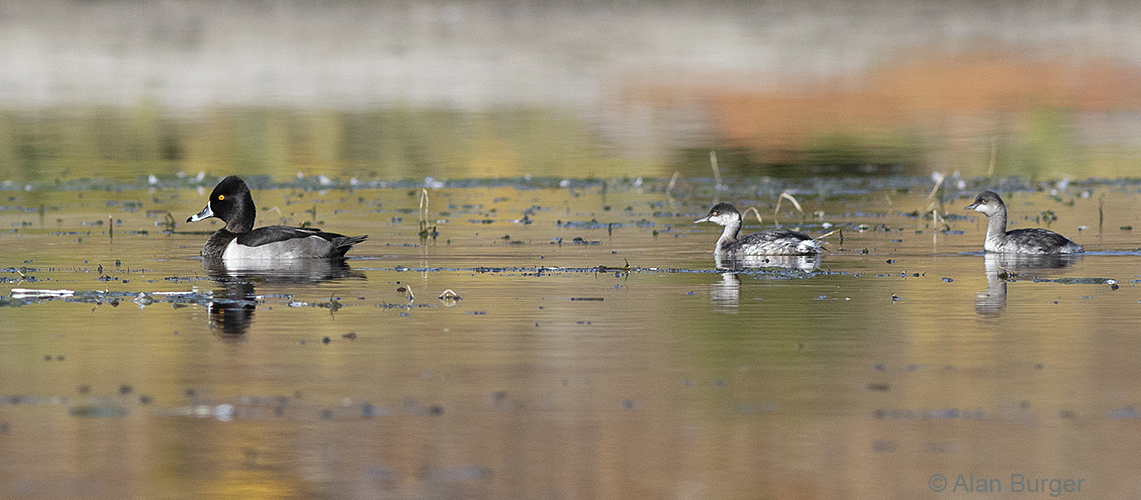
A male Ring-necked Duck along with two Horned Grebes – 30 September 2022.
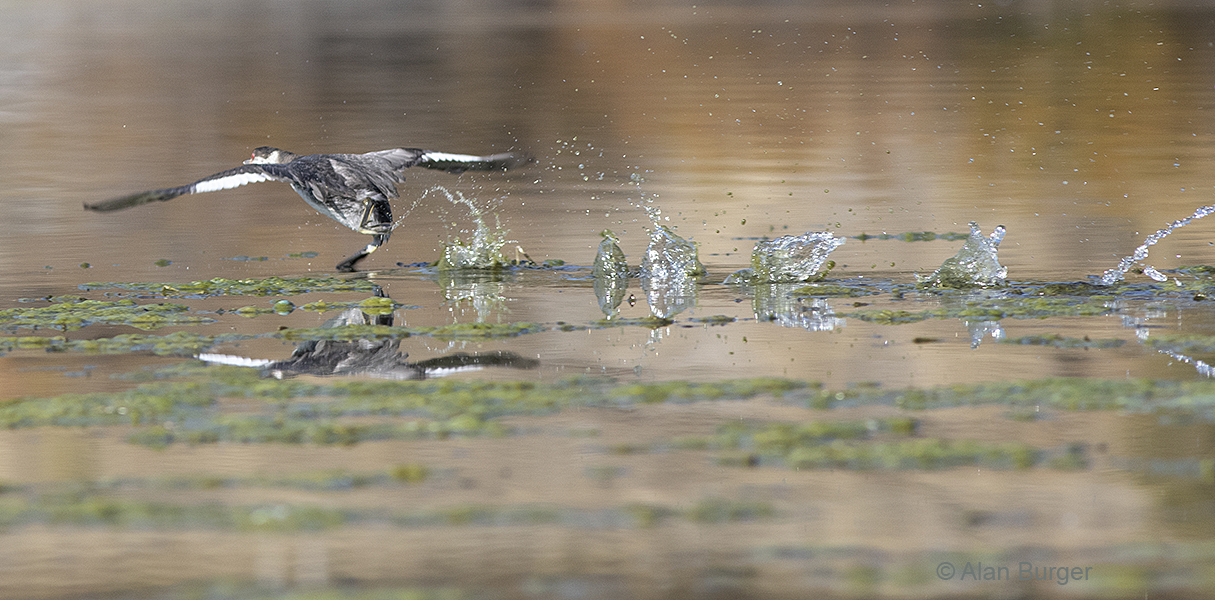
A Horned Grebe taking flight.
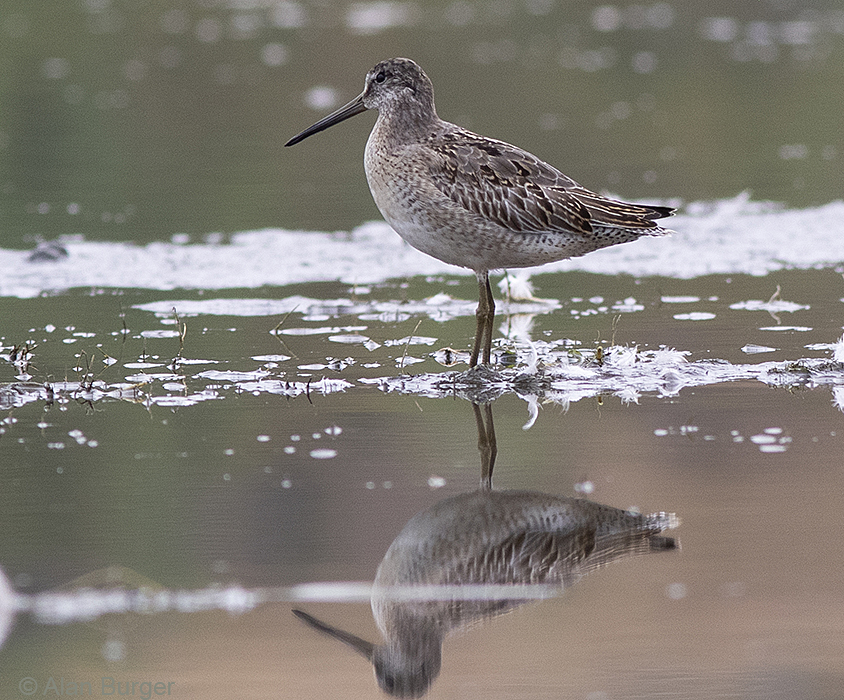
Long-billed Dowitchers are regular visitors and appear to remain for some weeks at the lake. They breed in the high Arctic tundra many hundreds of km from Mamit Lake and migrate to the southern U.S. and Mexico in winter. This is an adult bird in the process of moulting from its bright cinnamon, white and black breeding plumage into a dull grey winter (basic) plumage. 26 August 2022.
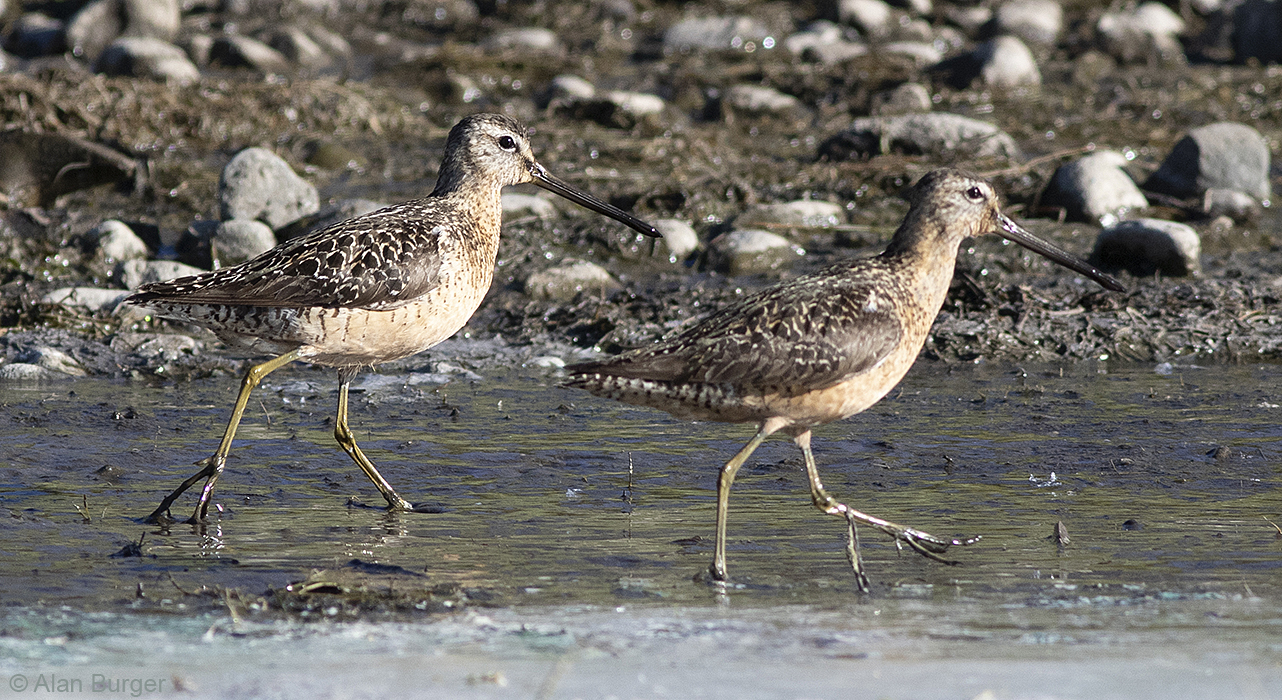
Two Long-billed Dowitchers stepping out in the mud – 7 August 2022. These are adult birds still in breeding (alternate) plumage with bright white-tipped back feathers.
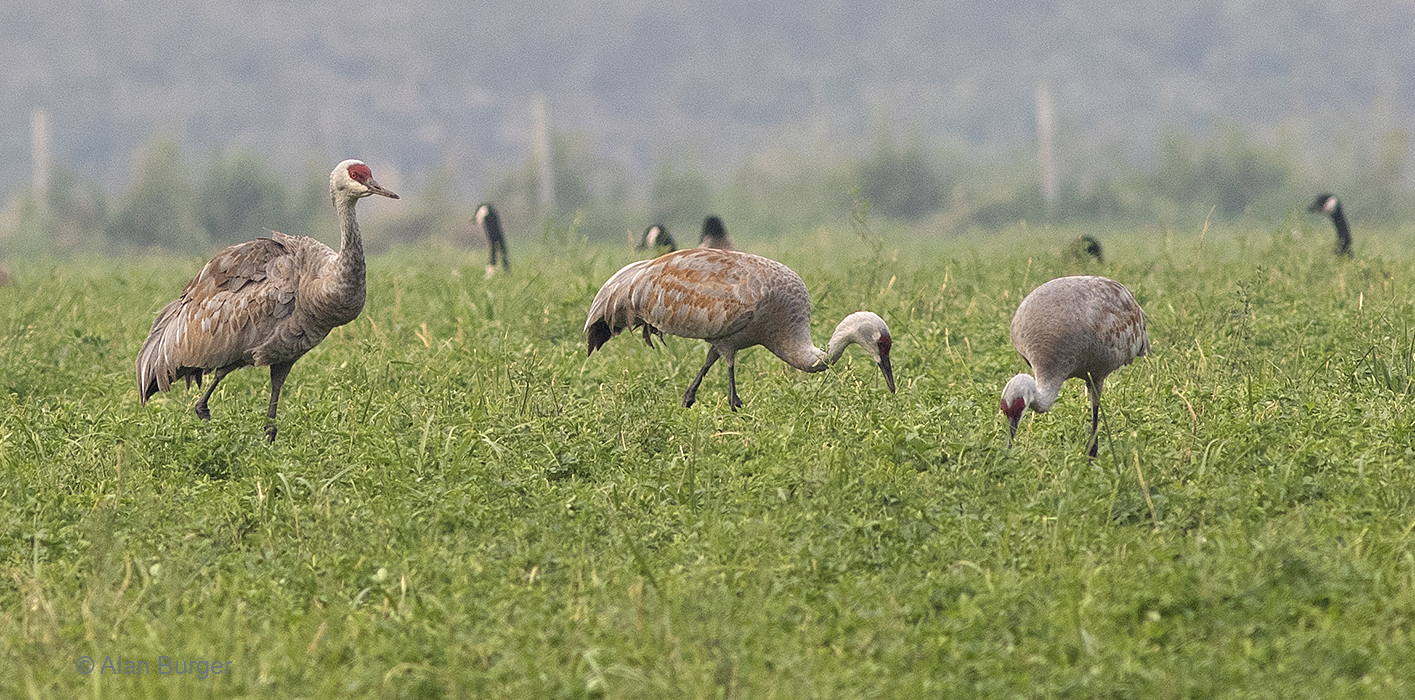
The fields around Mamit Lake are often used as a migration stop-over for Sandhill Cranes heading south in fall – 11 September 2022.
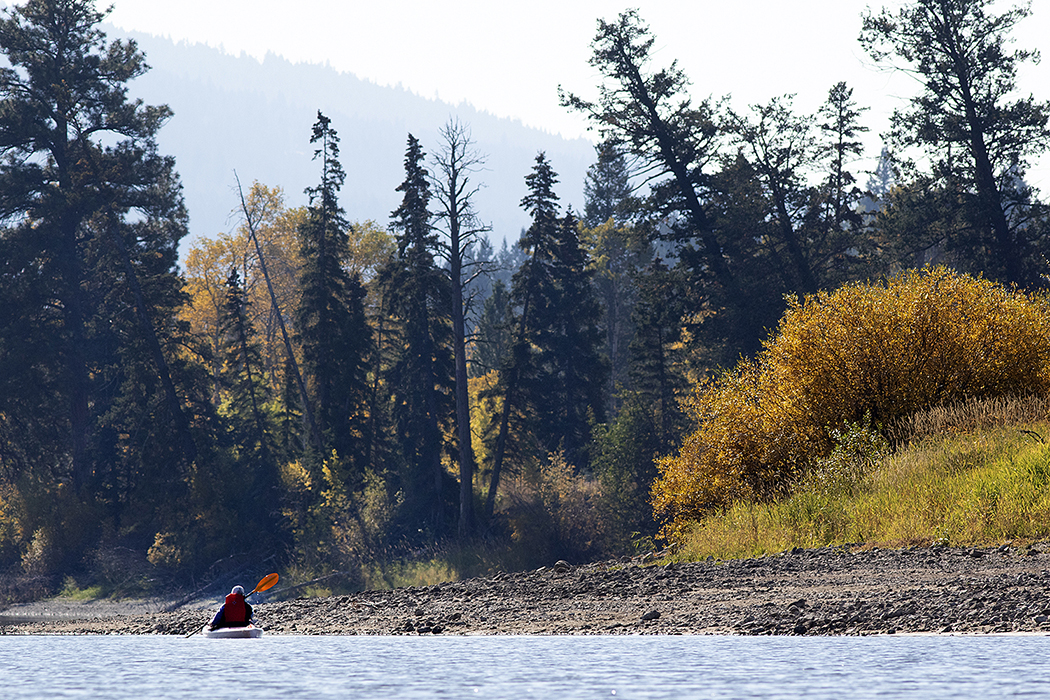
My friend Nigel paddling on Mamit Lake in fall – 30 September 2022.
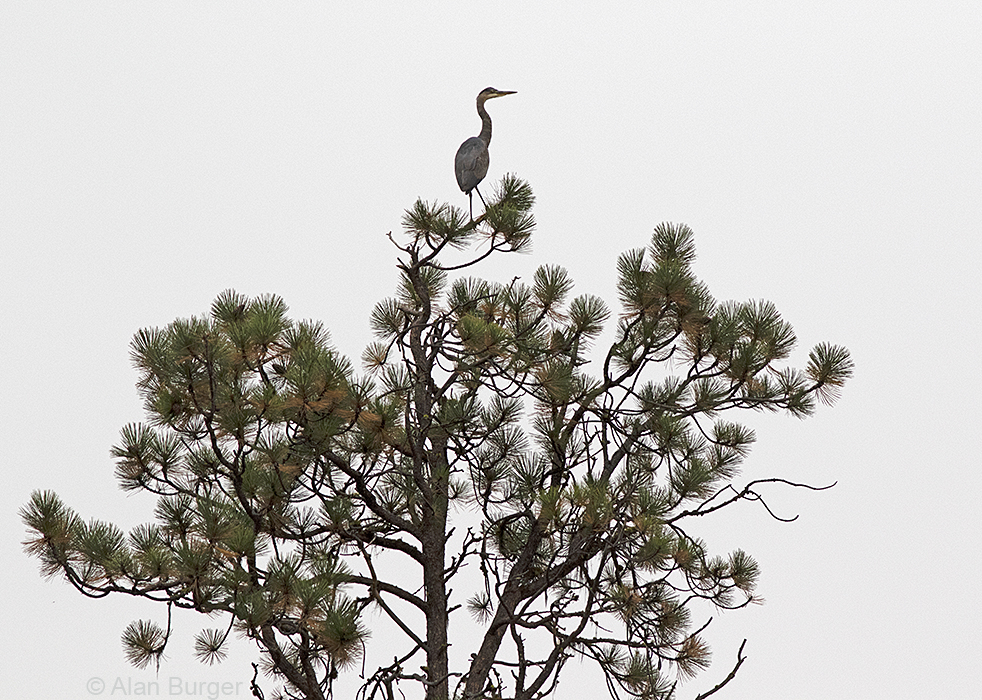
A Great Blue Heron topping a big Ponderosa Pine tree makes an interesting silhouette.
All photos were taken with a Canon 7D MkII with a 300 mm EF 1.4 “L” lens.
For more of my photos of wildlife on Mamit Lake in previous years go to this link and scroll down: Nature & Birds in BC
